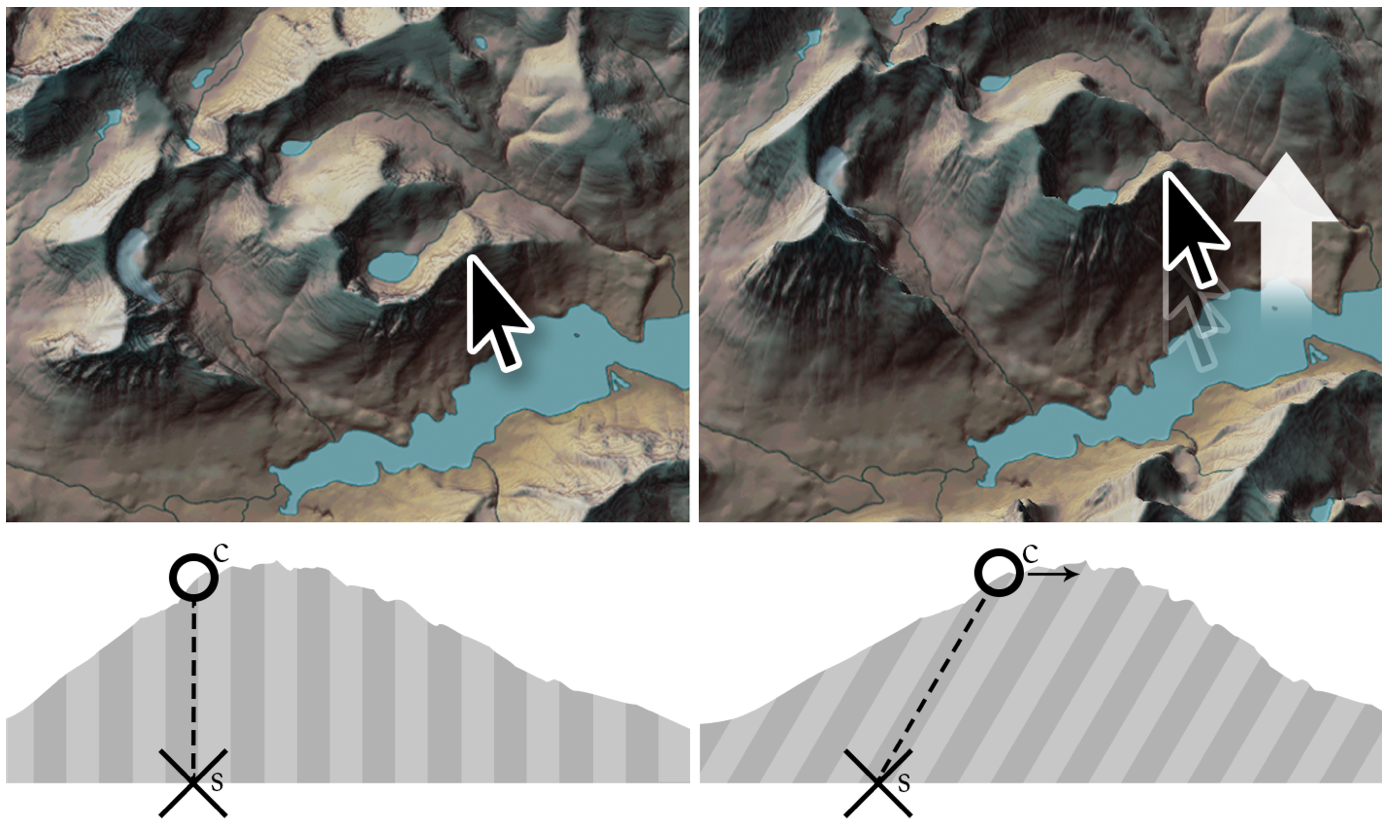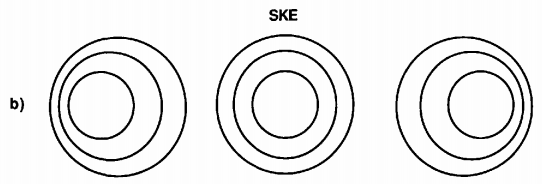Lightweight Relief Shearing for Enhanced Terrain Perception on Interactive Maps

We explore interactive relief shearing, a set of non-intrusive, direct manipulation interactions that expose depth and shape information in terrain maps using ephemeral animations. Reading and interpreting topography and relief on terrain maps is an important aspect of map use, but extracting depth information from 2D maps is notoriously difficult. Modern mapping software attempts to alleviate this limitation by presenting digital terrain using 3D views. However, 3D views introduce occlusion, complicate distance estimations, and typically require more complex interactions. In contrast, our approach reveals depth information via shearing animations on 2D maps, and can be paired with existing interactions such as pan and zoom. We examine explicit, integrated, and hybrid interactions for triggering relief shearing and present a version that uses device tilt to control depth effects. Our evaluation shows that these interactive techniques improve depth perception when compared to standard 2D and perspective views.
Article
Wesley Willett, Bernhard Jenny, Tobias Isenberg, and Pierre Dragicevic. 2015. Lightweight Relief Shearing for Enhanced Terrain Perception on Interactive Maps. In Proc of the 33rd Annual ACM Conference on Human Factors in Computing Systems (CHI '15). ACM, New York, NY, USA, 3563-3572.
Video
Study Material
Additional material for facilitating the re-analysis, meta-analysis, and replication of our study:
- log-experiment1.R --- The original logs for all 20 participants in our first experiment.
- log-experiment2.R --- The original logs for the 14 participants in our second experiment.
- experiment1.R --- Analysis code for the first experiment.
- experiment2.R --- Analysis code for the first experiment.
- plotting.R --- Charting methods used by experiment1.R and experiment2.R.
- bootstrap_macros.R --- Helper methods for computing bootstrap CIs.
- bootstrap_macros_tests.R --- Test files for bootstrap_macros.R.
Additional Related Work

After we published our work we became aware of the following 1992 paper that is very related to lightweight relief shearing:
Kaiser, M. K., & Proffitt, D. R. (1992). Using the Stereokinetic Effect to Convey Depth: Computationally Efficient Depth-From-Motion Displays. Human Factors: The Journal of the Human Factors and Ergonomics Society, 34(5), 571-581.
This paper:
- Discusses animated relief shearing (called 'SKE display' in the article) and contrasts it with rigid rotation (called 'KDE display')
- Briefly discusses an application to contour maps (as well as air traffic control displays)
- Mentions kinetic depth after effects and the possibility of using transient animations
Follow-up Work
- Elastic Terrain, a web app that implements lightweight relief shearing.
- Buddeberg, J., Jenny, B., & Willett, W. (2016). Interactive Shearing for Terrain Visualization: an Expert Study. GeoInformatica, 1-23.
License
 | All material on this page is CC-BY-SA. If you reuse or adapt it please reference our article and/or link to this page. |
Contact
- Wesley Willett (principal investigator)
- Bernhard Jenny
- Tobias Isenberg
- Pierre Dragicevic